|
Size: 27
Comment:
|
Size: 589
Comment:
|
| Deletions are marked like this. | Additions are marked like this. |
| Line 1: | Line 1: |
| ## page was renamed from CoP_AppendixII {{attachment:CoP_banner2.png}} |
|
| Line 2: | Line 5: |
| <<Include(public/Form GE - Guidelines)>> ---- == Form GE == <<Include(public/Form GE1)>> ---- == Validation Forms == <<Include(public/Production)>> ---- <<Include(public/Conformation)>> ---- <<Include(public/Udder)>> ---- <<Include(public/Longevity)>> ---- <<Include(public/Calving)>> ---- <<Include(public/Female Fertility)>> ---- <<Include(public/Workability)>> ---- <<Include(public/GENO guidelines)>> ---- <<Include(public/Form GENO)>> |

Appendix II - Forms
Guideline to Form GE
You are kindly asked to fill in a Form GE for all official traits in your country and submit the form(s) to the Interbull Centre ( interbull@slu.se ). We require that all traits submitted to Interbull evaluations are described in a Form GE in such a way that it is easy to understand exactly what traits are included in the international genetic evaluations.
We also encourage you to submit details for all other official traits in your country to facilitate transparency.
Please follow these guidelines as closely as possible when filling out the form(s) in order to accomplish this and in order for forms to be as homogeneous across country as possible.
General Guidelines
- Write in English.
Use one form for each main trait group. Number sub-traits within a main trait group and refer to
these numbers throughout the document, when you have evaluations for more than one trait per main
trait group.Provide details on genetic parameters in Appendix GE. In addition to this, provide parameters for the
production, conformation, and health traits that are submitted for international genetic evaluations in
Appendix PR, CO/BCO, and SM, respectively.Do not modify the form, i.e. keep all appendices even if they are empty, but feel free to add for
instance tables with genetic (co-)variances.- Be detailed, but concise.
- Quantify answers wherever possible.
Give as detailed information as possible, but remember that some information is better than no
information!
Specific Guidelines:
Country (or countries)
Give the complete name. Write all country names if joint evaluation.
Main trait group
Either: Production, Conformation, Health, Longevity, Calving, Female fertility, Workability, Beef production, Efficiency, or Other traits.
Breed(s)
Give the complete name of the breed(s). If a breed is evaluated together with a different breed, write the breed of evaluation in parenthesis.
Trait(s), trait definition(s) and unit(s) of measurement
Briefly state the definition of the trait in words (e.g. fat percentage, non- return rate 56d, etc). Write the unit of measurement, e.g. liter, kg, lb, 1000cells/ml, etc. Indicate frequencies per category if the trait is categorical and specify transformation of data if practiced. For combined traits give the exact formula used to combine sub-traits. Press enter before each new trait is described and number the traits (this number should be used to make reference to a particular trait throughout the document).
Method of measuring and collecting data Indicate source of data (e.g. milk recording, AI studs, veterinary reporting, slaughterhouse, etc). Explain briefly how the reported records are collected.
Time period for data inclusion Give a date, e.g. calving since 1985, cows born since 1980, etc.
Age groups (e.g. parities) included If more than one lactation is used, are there any weighting involved? What are these weights? Use parity = 0 for heifers.
Other criteria (data edits) for inclusion of records: e.g. acceptable limits for phenotypic expression?, missing pedigree, status of herd/animal, etc
Criteria for extension of records (if applicable) e.g. minimum and maximum number of test days required and extension method/formula.
Sire categories Give sire categories included in the genetic evaluations: AI vs. NS, 1st vs. 2nd crop, young vs. proven bulls, percentage of ET produced bulls, etc., and preferably quantify number of sires in each category.
Environmental effects, pre-adjustments What are the records adjusted for (age, heterogeneous variance, days open, etc)? Are pre-adjustments additive or multiplicative, i.e. affecting only the mean or both mean and variance? Write the relevant pre-adjustment equations and provide a copy of the key reference. How often are pre-adjustment factors updated (last update)? Give the base in months for age adjustments, if applicable.
Method (model) of genetic evaluation Use abbreviations for most common effects (list of abbreviations available on our website under Service> Service Documentation >Abbreviations to use in Interbull forms) e.g. MT-ML-RR-AM, Survival kit. If weighted analysis (e.g. records in progress) please give weights.
Environmental effects in the genetic evaluation model State nature of these effects (e.g. continuous, discontinuous), number of levels, and in parenthesis how they are treated (e.g. fixed=F, random=R).
Adjustment for heterogeneous in variance in evaluation model Indicate whether adjusted for in the model and if so what is adjusted for and how. Please give reference(s) if available.
Use of genetic groups and relationships Is the relationship matrix modified in any way? What is the grouping based on? Birth year? Percentage of the breed purity? Country of origin? Etc?
Blending of foreign/Interbull information in evaluation Yes or no. If yes, please briefly explain how or give reference.
Genetic parameters in the evaluation Give ALL genetic parameters assumed in genetic model (h2, 2p, rg, rp, t, c, etc) in appendix GE. Provide information also in appendices PR, CO, BCO, SM, as applicable, if you participate in the international genetic evaluations of Interbull.
System validation Explain the validation process: Checks on data quality / model, trend estimation? RBV correlations? Etc.
Expression of genetic evaluations If standardised (e.g. RBV), give standardisation formula on PART 2: EBV, ETA, RBV, PD, etc. and units used. Provide standardization formula when practiced
Definition of genetic reference base How is the genetic (reference) base defined: cow or bull; Fixed or rolling; birth year, calving year or proof year; etc.
Next base change
Calculation of reliability Briefly state how reliabilities are calculated and give reference if available.
Criteria for official publication of evaluations Minimum reliability or number of daughters / herd, etc.
Number of evaluations / publications per year 1, 2, 3,...? Which month(s)?
Use in total merit index Name the total merit (performance) index and its constituents. Give economic weights and indicate how they are expressed (preferably in genetic standard deviation units).
Anticipated changes in the near future State the nature and the date of the anticipated / planned change.
Key reference on methodology applied Please name the key references, which are used as the basis of the current genetic evaluations.
Key organization: name, address, phone, fax, e-mail, web site Be explicit.
Form GE
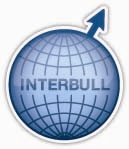
Status as of: PLEASE ENTER A DAY
Form GE
Download the MS-Word version HERE FormGE]
DESCRIPTION OF NATIONAL GENETIC EVALUATION SYSTEMS
Country (or countries) |
|
|
Main trait group1 |
|
|
Breed(s) |
|
|
Trait definition(s) and unit(s) of measurement2 |
|
|
Method of measuring and collecting data |
|
|
Time period for data inclusion |
|
|
Age groups (e.g. parities) included |
|
|
Other criteria (data edits) for inclusion of records |
|
|
Criteria for extension of records (if applicable) |
|
|
Sire categories |
|
|
Environmental effects3, pre-adjustments |
|
|
Method (model) of genetic evaluation3 |
|
|
Environmental effects3 in the genetic evaluation model |
|
|
Adjustment for heterogeneous variance in evaluation model |
|
|
Use of genetic groups and relationships |
|
|
Blending of foreign/Interbull information in evaluation |
|
|
Genetic parameters in the evaluation |
Use Appendix GE for heritability/genetic variance estimates; for multiple-trait genetic evaluations, provide genetic correlation estimates between traits separately.Use also appendices PR, CO, BCO, SM, LO, CA, as applicable, if you participate in the international genetic evaluations of Interbull |
|
System validation |
|
|
Expression of genetic evaluations |
|
|
Definition of genetic reference baseNext base change |
|
|
Calculation of reliability |
|
|
Criteria for official publication of evaluations |
|
|
Number of evaluations / publications per year |
|
|
Use in total merit index4 |
|
|
Anticipated changes in the near future |
|
|
Key reference on methodology applied |
|
|
Key organisation: name, address, phone, fax, e-mail, web site |
|
|
1) Either: Production (e.g. milk, fat, protein), Conformation, Health (e.g. mastitis resistance, milk somatic cell, resistance to diseases other than mastitis), Longevity, Calving (e.g. stillbirth, calving ease), Female fertility (e.g. non-return rate, interval between reproductive events, number of AI’s, heat strength), Workability (e.g. milking speed, temperament), Beef production, Efficiency (e.g. body weight, energy balance, body conditioning score), or Other traits.
2) Indicate frequencies per category if the trait is categorical and specify transformation of data if practiced.
3) Use abbreviations for most common effects (see document with list of abbreviations at www.interbull.org/service/service documentation/abbreviation to use in Interbull forms) and indicate random (R) or fixed (F).
4) Please give economic weights and indicate how they are expressed (preferably in genetic standard deviation units).
Form GE Appendix GE Parameters used in genetic evaluation
Country (or countries): |
|
Main trait group: |
|
Breed (repeat as necessary): |
|
Trait |
Definition |
ITBa |
h2b |
geneticvarianceb |
official proofstandardisation formulac |
|
|
|
|
|
|
a Indicate, with X, traits that are submitted to Interbull for international genetic evaluations.
b If repeated records are treated as separate traits, provide heritability estimates and genetic variances separately for each trait, as well as for all traits pooled, i.e. for the trait submitted to Interbull.
c Expressed as follows: StandEval=((eval-a)/b)*c+d where a=mean of the base adjustment, b=standard deviation of the base, c=standard deviation of expression (include sign if scale is reversed), and d=base of expression.
Form GE Appendix PR Parameters for national genetic evaluations for production traits as provided to Interbull
Country (or countries): |
|
Main trait group: |
Production |
Breed(s): |
|
Trait |
h2a |
geneticvariancea |
official proofstandardisation formulab |
Milk yield: |
|
|
|
Fat yield: |
|
|
|
Protein yield: |
|
|
|
a If lactations, or part of lactations, are treated as separate traits, provide heritability estimates and genetic variances separately for each lactation, as well as for all lactations pooled, i.e. for the trait submitted to Interbull.b Expressed as follows: StandEval=((eval-a)/b)*c+d where a=mean of the base adjustment, b=standard deviation of the base, c=standard deviation of expression (include sign if scale is reversed), and d=base of expression.
Form GE Appendix CO Parameters for national genetic evaluations for conformation traits as provided to Interbull
(all breeds except Brown Swiss)
Country (or countries): |
|
Main trait group: |
Conformation |
Breed(s): |
|
Trait |
Definition |
h2a |
geneticvariancea |
official proofstandardisation formulab |
Stature |
|
|
|
|
Chest Width |
|
|
|
|
Body Depth |
|
|
|
|
Angularity |
|
|
|
|
Rump Angle |
|
|
|
|
Rump Width |
|
|
|
|
Rear Leg Set |
|
|
|
|
Rear Leg Rear View |
|
|
|
|
Foot Angle |
|
|
|
|
Fore Udder |
|
|
|
|
Rear Udder Height |
|
|
|
|
Udder Support |
|
|
|
|
Udder Depth |
|
|
|
|
Front Teat Placement |
|
|
|
|
Teat Length |
|
|
|
|
Rear Teat Placement |
|
|
|
|
Overall Conformation Score |
|
|
|
|
Overall Udder Score |
|
|
|
|
Overall Feet & Leg Score |
|
|
|
|
Locomotion |
|
|
|
|
Body Condition Score |
|
|
|
|
a If repeated records are treated as separate traits, provide heritability estimates and genetic variances separately for each trait, as well as for all traits pooled, i.e. for the trait submitted to Interbull.b Expressed as follows: StandEval=((eval-a)/b)*c+d where a=mean of the base adjustment, b=standard deviation of the base, c=standard deviation of expression (include sign if scale is reversed), and d=base of expression.
Form GE Appendix BCO Parameters for national genetic evaluations for conformation traits as provided to Interbull
Country (or countries): |
|
Main trait group: |
Conformation |
Breed: |
Brown Swiss |
Trait |
Definition |
h2a |
geneticvariancea |
official proofstandardisation formulab |
Stature |
|
|
|
|
Chest width |
|
|
|
|
Body depth |
|
|
|
|
Angularity |
|
|
|
|
Rump angle |
|
|
|
|
Rump Width |
|
|
|
|
Rear Leg Side View |
|
|
|
|
Pasterns/Foot Angle |
|
|
|
|
Deep Heel (Hoof Height) |
|
|
|
|
Fore Udder Attachment |
|
|
|
|
Rear Udder Attachment Height |
|
|
|
|
Rear Udder Attachment Width |
|
|
|
|
Udder Support |
|
|
|
|
Udder Depth |
|
|
|
|
Front Teat Placement |
|
|
|
|
Teat Length |
|
|
|
|
Rear Teat Placement |
|
|
|
|
Overall Conformation Score |
|
|
|
|
Overall Udder Score |
|
|
|
|
Overall Feet & Leg Score |
|
|
|
|
Locomotion |
|
|
|
|
Body Condition Score |
|
|
|
|
a If repeated records are treated as separate traits, provide heritability estimates and genetic variances separately for each trait, as well as for all traits pooled, i.e. for the trait submitted to Interbull.b Expressed as follows: StandEval=((eval-a)/b)*c+d where a=mean of the base adjustment, b=standard deviation of the base, c=standard deviation of expression (include sign if scale is reversed), and d=base of expression.
Form GE Appendix SM Parameters for national genetic evaluations for udder health traits as provided to Interbull
Country (or countries): |
|
Main trait group: |
Health |
Breed(s): |
|
Trait |
h2a |
geneticvariancea |
official proofstandardisation formulab |
Milk Somatic Cell: |
|
|
|
Clinical Mastitis: |
|
|
|
a If repeated records are treated as separate traits, provide heritability estimates and genetic variances separately for each trait, as well as for all traits pooled, i.e. for the trait submitted to Interbull.b Expressed as follows: StandEval=((eval-a)/b)*c+d where a=mean of the base adjustment, b=standard deviation of the base, c=standard deviation of expression (include sign if scale is reversed), and d=base of expression.
Form GE Appendix LO Parameters for national genetic evaluations for longevity traits as provided to Interbull
Country (or countries): |
|
Main trait group: |
Longevity |
Breed(s): |
|
Trait |
h2 |
geneticvariance |
official proofstandardisation formulaa |
Direct longevity: |
|
|
|
Combined longevity: |
|
|
|
a Expressed as follows: StandEval=((eval-a)/b)*c+d where a=mean of the base adjustment, b=standard deviation of the base, c=standard deviation of expression (include sign if scale is reversed), and d=base of expression.
Form GE Appendix CA Parameters for national genetic evaluations for calving traits as provided to Interbull
Country (or countries): |
|
Main trait group: |
Calving Traits |
Breed(s): |
|
Trait |
h2 |
geneticvariance |
official proofstandardisation formulaa |
Direct calving ease: |
|
|
|
a Expressed as follows: StandEval=((eval-a)/b)*c+d where a=mean of the base adjustment, b=standard deviation of the base, c=standard deviation of expression (include sign if scale is reversed), and d=base of expression.
Validation Forms
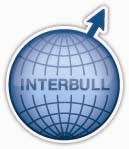
Download the MS-Word version HERE form_VAL_PR.rtf
Form VAL_PR DESCRIPTION OF TREND VALIDATION RESULTS FOR PRODUCTION TRAITS
Country (or countries): |
|
Breed(s): |
|
DATE: |
|
Indicate whether this information is provided for test or routine international evaluation: |
Test run Routine run |
Please provide the expected correlation between results of this national evaluation (let YYYY be the year of this evaluation) and the last routine genetic evaluation run in year YYYY-4 (for trend validation; usual estimates .95 - .99) |
||
|
Milk yield: |
|
|
Fat yield: |
|
|
Protein yield: |
|
Indicate genetic trend validation results |
|||||
|
|||||
Method 1 |
|||||
|
If not applied, explain reasons: |
|
|||
|
If applied, provide: |
Genetic trend in AI bull population |
|||
|
|
First lactation |
All lactations |
||
|
Milk yield: |
|
|
||
|
Fat yield: |
|
|
||
|
Protein yield: |
|
|
||
|
|
|
|
||
Method 2 |
|
|
|
||
|
If not applied, explain reasons: |
|
|||
|
If applied, provide: |
Daughter deviation yearly change |
|||
|
|
Estimate |
S.E. of estimate |
||
|
Milk yield: |
|
|
||
|
Fat yield: |
|
|
||
|
Protein yield: |
|
|
||
|
|
|
|
||
Method 3 |
|
|
|
||
|
If not applied, explain reasons: |
|
|||
|
If applied, provide: |
Effect of new daughters |
|||
|
|
Estimate |
S.E. of estimate |
||
|
Milk yield: |
|
|
||
|
Fat yield: |
|
|
||
|
Protein yield: |
|
|
||
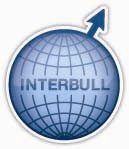
Download the MS-Word version HERE form_VAL_CO.rtf
Form VAL_CO DESCRIPTION OF TREND VALIDATION RESULTS FOR CONFORMATION TRAITS
Country (or countries): |
|
Breed(s): |
|
DATE: |
|
Indicate whether this information is provided for test or routine international evaluation: |
Test run Routine run |
Please provide the expected correlation between results of this national evaluation (let YYYY be the year of this evaluation) and the last routine genetic evaluation run in year YYYY-4 (for trend validation; usual estimates .95 - .99) |
||
|
Stature: |
|
|
Udder support: |
|
|
Locomotion: |
|
|
Body Condition Score |
|
Indicate genetic trend validation results |
|||||
|
|||||
Method 1 |
|||||
|
If not applied, explain reasons: |
|
|||
|
If applied, provide: |
Genetic trend in AI bull population |
|||
|
|
First lactation |
All lactations |
||
|
|
Estimate |
S.E. of estimate |
||
|
Stature: |
|
|
||
|
Udder support: |
|
|
||
|
Locomotion: |
|
|
||
|
Body Condition Score: |
|
|
||
Method 2 |
|
|
|
||
|
If not applied, explain reasons: |
|
|||
|
If applied, provide: |
Daughter deviation yearly change |
|||
|
|
Estimate |
S.E. of estimate |
||
|
Stature: |
|
|
||
|
Udder support: |
|
|
||
|
Locomotion: |
|
|
||
|
Body Condition Score: |
|
|
||
Method 3 |
|
|
|
||
|
If not applied, explain reasons: |
|
|||
|
If applied, provide: |
Effect of new daughters |
|||
|
|
Estimate |
S.E. of estimate |
||
|
Stature: |
|
|
||
|
Udder support: |
|
|
||
|
Locomotion: |
|
|
||
|
Body Condition Score: |
|
|
||
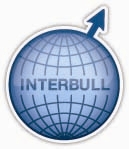
Download the MS-Word version HERE Form_VAL_LO.rtf
Form VAL_LO DESCRIPTION OF TREND VALIDATION RESULTS FOR LONGEVITY TRAITS
Country (or countries): |
|
Breed(s): |
|
DATE: |
|
Indicate whether this information is provided for test or routine international evaluation: |
Test run Routine run |
Please provide the expected correlation between results of this national evaluation (let YYYY be the year of this evaluation) and the last routine genetic evaluation run in year YYYY-4 (for trend validation; usual estimates .95 - .99) |
||
|
Direct longevity: |
|
|
Combined longevity: |
|
Indicate genetic trend validation results |
|||||
|
|||||
Method 2 |
|
|
|
||
|
If not applied, explain reasons: |
|
|||
|
If applied, provide: |
Daughter deviation yearly change |
|||
|
|
Estimate |
S.E. of estimate |
||
|
Direct longevity: |
|
|
||
|
Combined longevity: |
|
|
||
|
|
|
|
||
Method 3 |
|
|
|
||
|
If not applied, explain reasons: |
|
|||
|
If applied, provide: |
Effect of new daughters |
|||
|
|
Estimate |
S.E. of estimate |
||
|
Direct longevity: |
|
|
||
|
Combined longevity: |
|
|
||
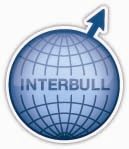
Download the MS-Word version HERE Form_VAL_CA.rtf
Form VAL_CA DESCRIPTION OF TREND VALIDATION RESULTS FOR CALVING TRAITS
Country (or countries): |
|
Breed(s): |
|
DATE: |
|
Indicate whether this information is provided for test or routine international evaluation: |
Test run Routine run |
Please provide the expected correlation between results of this national evaluation (let YYYY be the year of this evaluation) and the last routine genetic evaluation run in year YYYY-4 (for trend validation; usual estimates .95 - .99) |
||
|
Direct calving ease: |
|
|
Maternal calving ease: |
|
|
Direct stillbirth |
|
|
Maternal stillbirth |
|
Indicate genetic trend validation results |
|||||
|
|||||
Method 2 |
|
|
|
||
|
If not applied, explain reasons: |
|
|||
|
If applied, provide: |
Daughter deviation yearly change |
|||
|
|
Estimate |
S.E. of estimate |
||
|
Direct calving ease: |
|
|
||
|
Maternal calving ease: |
|
|
||
|
Direct stillbirth: |
|
|
||
|
Maternal stillbirth: |
|
|
||
|
|
|
|
||
Method 3 |
|
|
|
||
|
If not applied, explain reasons: |
|
|||
|
If applied, provide: |
Effect of new daughters |
|||
|
|
Estimate |
S.E. of estimate |
||
|
Direct calving ease: |
|
|
||
|
Maternal calving ease: |
|
|
||
|
Direct stillbirth: |
|
|
||
|
Maternal stillbirth: |
|
|
||
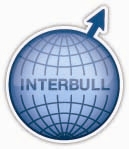
Download the MS-Word version HERE Form_VAL_WO.rtf
Form VAL_WO DESCRIPTION OF TREND VALIDATION RESULTS FOR WORKABILITY TRAITS
Country (or countries): |
|
Breed(s): |
|
DATE: |
|
Indicate whether this information is provided for test or routine international evaluation: |
Test run Routine run |
Please provide the expected correlation between results of this national evaluation (let YYYY be the year of this evaluation) and the last routine genetic evaluation run in year YYYY-4 (for trend validation; usual estimates .95 - .99) |
||
|
Trait 1: Milking Speed |
|
|
Trait 2: Temperament |
|
Indicate genetic trend validation results |
|||||
|
|||||
Method 1 |
|
|
|
||
|
If not applied, explain reasons: |
|
|||
|
If applied, provide: |
Difference in trend between 1st and all lactations |
|||
|
|
Estimate |
S.E. of estimate |
||
|
Milking Speed |
|
|
||
|
Temperament |
|
|
||
Method 2 |
|
|
|
||
|
If not applied, explain reasons: |
|
|||
|
If applied, provide: |
Daughter deviation yearly change |
|||
|
|
Estimate |
S.E. of estimate |
||
|
Milking Speed |
|
|
||
|
Temperament |
|
|
||
Method 3 |
|
|
|
||
|
If not applied, explain reasons: |
|
|||
|
If applied, provide: |
Effect of new daughters |
|||
|
|
Estimate |
S.E. of estimate |
||
|
Milking Speed |
|
|
||
|
Temperament |
|
|
||
Guideline to Form GENO
You are kindly asked to fill in a Form GENO for all official traits in your country and submit the form(s) to the Interbull Centre ( interbull@slu.se ). We require that all traits submitted for a GMACE evaluations are described in a Form GENO in such a way that it is easy to understand exactly what traits are included in the GMACE international genetic evaluations. We also encourage you to submit details for all other official traits in your country to facilitate transparency. Please follow these guidelines as closely as possible when filling out the form(s) in order to accomplish this and in order for forms to be as homogeneous across country as possible.
General Guidelines
- Write in English.
- Use one form for each main trait group. Number sub-traits within a main trait group and refer to these numbers throughout the document, when you have evaluations for more than one trait per main trait group.
- Provide details on genetic parameters in Appendix GENO.
- Do not modify the form, i.e. keep all appendices even if they are empty, but feel free to add for instance tables with genetic (co-)variances.
- Be detailed, but concise.
- Quantify answers wherever possible.
Give as detailed information as possible, but remember that some information is better than no information!
Specific Guidelines:
Country (or countries)
Give the complete name. Write all country names if joint evaluation.
Main trait group
Either: Production, Conformation, Health, Longevity, Calving, Female fertility, Workability
Breed(s)
Give the complete name of the breed(s). If a breed is evaluated together with a different breed, write the breed of evaluation in parenthesis.
Trait(s), trait definition(s) and unit(s) of measurement
Briefly state the definition of the trait in words (e.g. fat percentage, non- return rate 56d, etc). Write the unit of measurement, e.g. liter, kg, lb, 1000cells/ml, etc. Indicate frequencies per category if the trait is categorical and specify transformation of data if practiced. For combined traits give the exact formula used to combine sub-traits. Press enter before each new trait is described and number the traits (this number should be used to make reference to a particular trait throughout the document).
Source of genotypes
Indicate source of data, i.e. chips used
Imputation method for missing genotypes
Describe the methodology applied.
Propagation of genomic information to non-genotyped descendants and ancestors
Describe methodology used
Animals included in reference population
define number of males, females, countries included, total number
Source of phenotypic data
DYD, de-regressed proofs, national EBVs and/or MACE evaluations
Other criteria (data edits) for inclusion of records
Explain briefly
Criteria for extension of records
(if applicable) e.g. minimum and maximum number of test days required and extension method/formula.
Sire categories
Give sire categories included in the genetic evaluations: AI vs. NS, 1st vs. 2nd crop, young vs. proven bulls, percentage of ET produced bulls, etc., and preferably quantify number of sires in each category.
Genomic model
linear, Bayesian, polygenic effect, genotypes or haplotypes
Blending of direct genomic value (DGV) with traditional EBV
Yes or no. If yes, please briefly explain how or give reference.
Environmental effects in the genetic evaluation model
State nature of these effects (e.g. continuous, discontinuous), number of levels, and in parenthesis how they are treated (e.g. fixed=F, random=R).
Adjustment for heterogeneous in variance in evaluation model
Indicate whether adjusted for in the model and if so what is adjusted for and how. Please give reference(s) if available.
Computation of genomic reliability
Describe how the genomic reliability is calculated
Blending of foreign/Interbull information in evaluation
Yes or no. If yes, please briefly explain how or give reference.
Genetic parameters in the evaluation
Use Appendix GENO for heritability/genetic variance estimates
Expression of genetic evaluations
If standardized (e.g. RBV), give standardization formula in the appendix
Definition of genetic reference base
How is the genetic (reference) base defined: cow or bull; Fixed or rolling; birth year, calving year or proof year; etc.
Labeling of genomic evaluations
Criteria for official publication of evaluations
Minimum reliability or number of daughters / herd, etc.
Number of evaluations / publications per year
1, 2, 3,...? Which month(s)?
Use in total merit index
Name the total merit (performance) index and its constituents. Give economic weights and indicate how they are expressed (preferably in genetic standard deviation units).
Anticipated changes in the near future
State the nature and the date of the anticipated / planned change.
Key reference on methodology applied
Please name the key references, which are used as the basis of the current genetic evaluations.
Key organization: name, address, phone, fax, e-mail, web site
Be explicit.
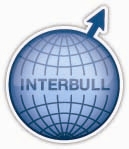
Form GENO
Status as of: PLEASE ENTER A DATE (YYYY-MM-DD)
Download the MS-Word version HERE FormGENO.
DESCRIPTION OF NATIONAL GENOMIC EVALUATION SYSTEMS
Country (or countries) |
|
Main trait groupa. NOTE. Only one trait group per form! |
|
Breed(s) |
|
Trait definition(s) and unit(s) of measurement Attach an appendix if needed |
|
Source of genotypes (chips used) |
|
Imputation method for missing genotypes |
|
Propagation of genomic information to non-genotyped descendants and ancestors |
|
Animals included in reference population (males, females, countries included, total number) |
|
Source of phenotypic data (DYD, de-regressed proofs, national EBVs and/or MACE evaluations) |
|
Other criteria (data edits) for inclusion of records |
|
Criteria for extension of records (if applicable) |
|
Sire categories |
|
Genomic model (linear, Bayesian, polygenic effect, genotypes or haplotypes) |
|
Blending of direct genomic value (DGV) with traditional EBV |
|
Environmental effects in the genetic evaluation model |
|
Adjustment for heterogeneous variance in evaluation model |
|
Computation of genomic reliability |
|
Blending of foreign/Interbull information in evaluation |
|
Genetic parameters in the evaluation |
Use Appendix GENO for heritability/genetic variance estimates; for multiple-trait genetic evaluations, provide genetic correlation estimates between traits separately.Use also appendices PR, CO, BCO, SM, LO, CA, as applicable, if you participate in the international genetic evaluations of Interbull |
Expression of genetic evaluations If standardized (e.g. RBV), give standardization formula in the appendix |
|
Definition of genetic reference base |
|
Labeling of genomic evaluations |
|
Criteria for official publication of evaluations |
|
Number of evaluations / publications per year |
|
Use in total merit index |
|
Anticipated changes in the near future |
|
Key reference on methodology applied |
|
Key organization: name, address, phone, fax, e-mail, web site |
|
aEither: Production (e.g. milk, fat, protein), Conformation, Health (e.g. mastitis resistance, milk somatic cell, resistance to diseases other than mastitis), Longevity, Calving (e.g. stillbirth, calving ease), Female fertility (e.g. non-return rate, interval between reproductive events, number of AI’s, heat strength), Workability (e.g. milking speed, temperament), Beef production, Efficiency (e.g. body weight, energy balance, body conditioning score), or Other traits.
System Validation
Approximate number of test bulls for this trait group: |
|
If including foreign reference bulls: 4-yr old de-regressed MACE EBVs, OR Current de-regressed MACE EBVs If including foreign test bulls (type of proof 21 or 22), provide the reason. |
|
If using a truncation ≠ 4 years, provide the reason. |
|
If applying an age cutoff for test bulls ≠ (YYYY-8), provide the reason |
|
Appendix GENO
Parameters used in genetic/genomic evaluation
Country (or countries): |
|
|||||
Main trait group: |
|
|||||
Breed (repeat as necessary): |
|
|||||
Trait |
Definition |
ITBa |
h2b |
Genetic varianceb |
Official proof standardisation formulac |
|
|
|
|
|
|
|
|
|
|
|
|
|
|
|
|
|
|
|
|
|
|
aIndicate, with X, traits that are submitted to Interbull for international genetic evaluations. bIf repeated records are treated as separate traits, provide heritability estimates and genetic variances separately for each trait, as well as for all traits pooled, i.e. for the trait submitted to Interbull. cExpressed as follows: StandEval=((eval-a)/b)*c+d where a=mean of the base adjustment, b=standard deviation of the base, c=standard deviation of expression (include sign if scale is reversed), and d=base of expression.
